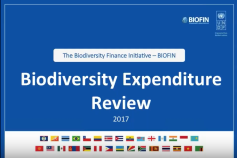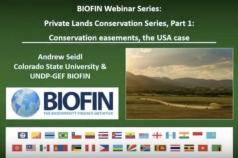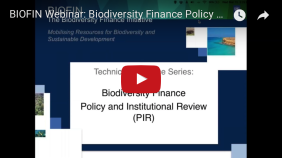
This report summarizes current findings from the budget expenditure review that
was conducted as part of BIOFIN’s overall assessment of Thailand’s current
biodiversity policy environment and investment status. BIOFIN’s conceptual
model views the integration of biodiversity investment and resource mobilization
into public and private decision making and financing, as being based on a
three-part process: 1) A review of current policy practice, biodiversity and
ecosystem trends, relevant actors and current expenditures (Policy and Institutional
Review in Workbook 1A, 1B and Expenditure Review in Workbook 1C);
2) Costing for the implementation of national biodiversity strategies and actions
(Workbook 2); and 3) Identification of potential finance actors, mechanisms,
revenue and feasibility (Workbook 3). The process evolves around national
biodiversity strategies and action plans that aim to synthesize the root causes
of biodiversity and ecosystem pressures, generate public awareness, and
identify potential drivers of changes and financing solutions. The resource
mobilization plans aim to achieve a better investment state by generating
sufficient public and private responses in order to close the biodiversity financing
gap.



